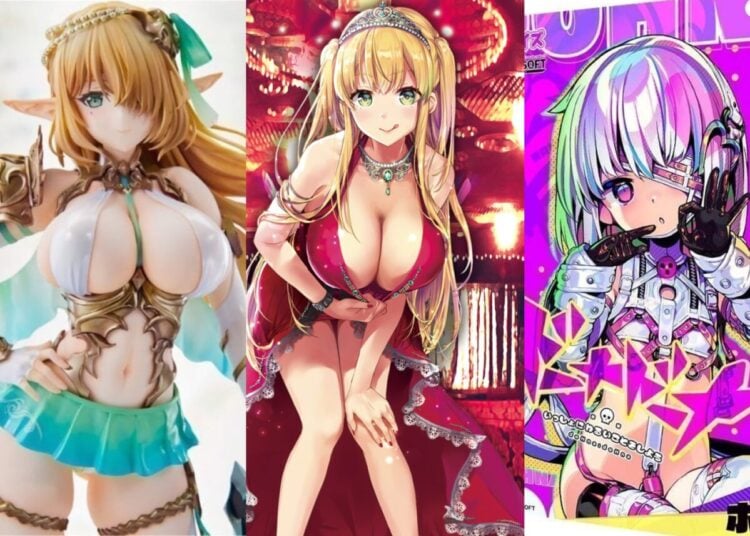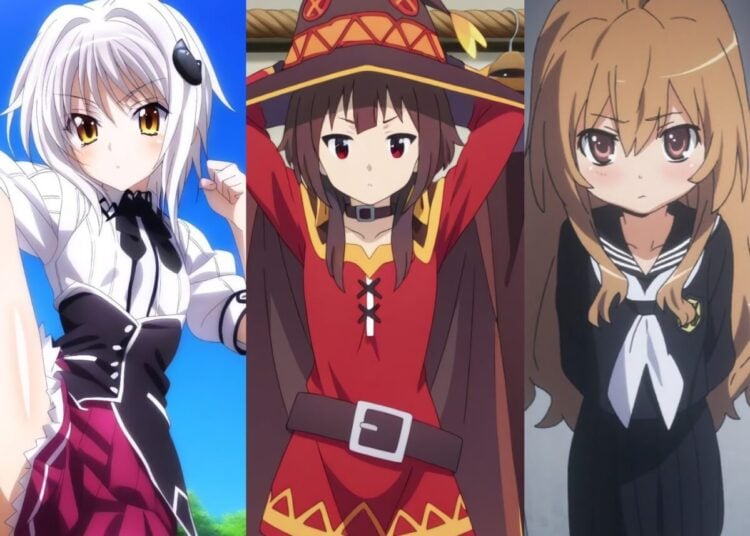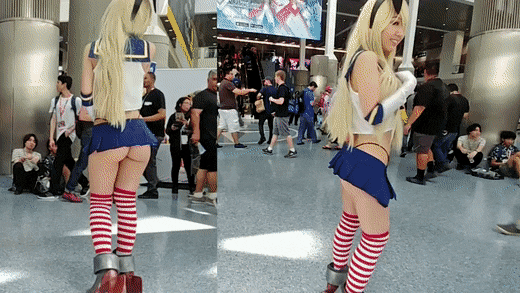
Outside the J-List office, the water-filled rice fields are extremely beautiful, looking like giant mirrors as they reflect the sky as the sun goes down. This is something I’ve rarely seen even though I live in Japan, because usually I’m in the U.S. this time of year, busily preparing for J-List’s huge Anime Expo booth. The coronavirus situation has led to the cancellation of Anime Expo 2020, though, so I’m unable to travel to Los Angeles and be with all the awesome fans this year. Instead, I thought I’d write about my long journey with Anime Expo over the years, as the owner of J-List!
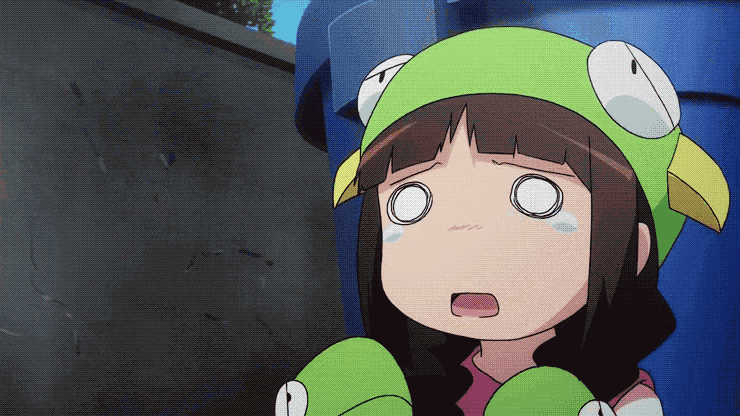
The First Anime Convention?
Modern pop culture conventions, of course, grew out of the nascent fandom for Star Trek in the aftermath of the cancelation of the original series, with the first major Star Trek convention taking place in 1972, complete with actors from the show and creator Gene Roddenberry. (I define a “modern” convention as an event large enough to attract famous names from the industry, which helps to create a virtuous circle that brings in more fans, then more famous guests, then even more fans, until the convention becomes so large everyone hates it.)
Anime grew in popularity slowly during the 80s, moving from something you watch at your monthly anime club meeting (without subtitles) to something you watched in the anime room at conventions like the San Diego Comic-Con (usually with subtitles). Although these unique cartoons from Japan were getting more and more popular, with standouts like Robotech and Akira being widely known, no one believed a convention entirely devoted to anime could be possible. Or could it?
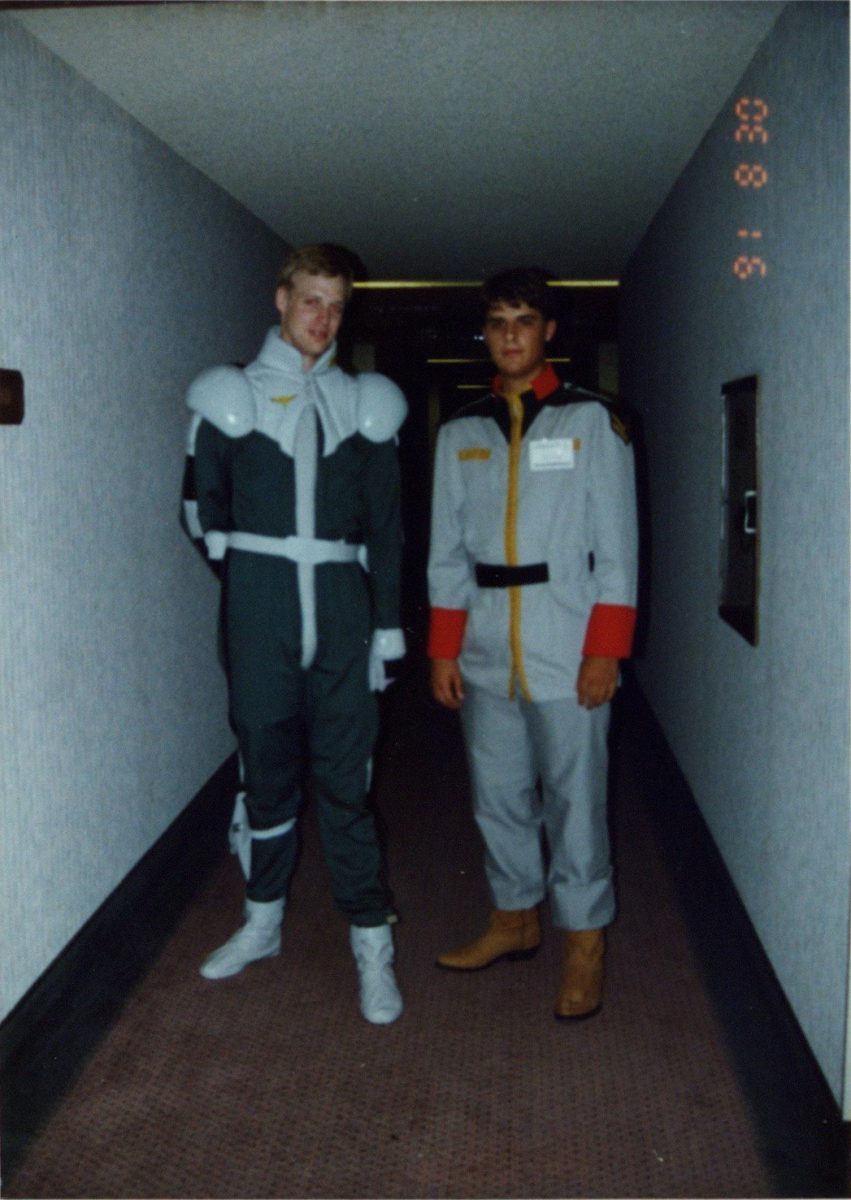
The History of Anime Expo
I’ve had the most incredible timing, let me tell you. Not only did I come to Japan just in time for the Internet to happen, making J-List, JAST USA and J18 Publishing possible, but I had the good luck to come to maturity just as the first dedicated anime convention appeared. Being part of Anime Expo has been, along with founding J-List, one of the most enjoyable areas of my life.
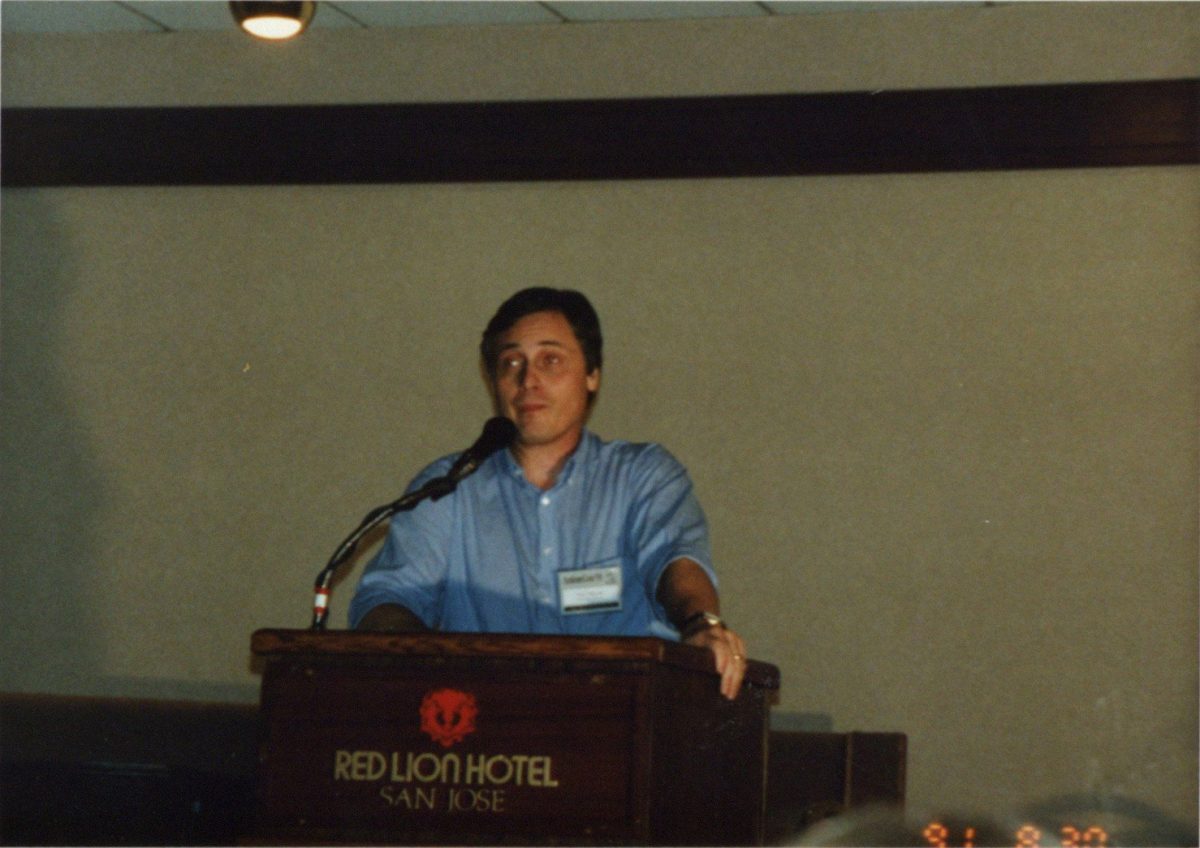
The first Anime Expo wasn’t called Anime Expo, but Anime Con ’91, held at the Red Lion Inn in San Jose. If you know anything about Anime Expo, you’ll know that the Society for the Promotion of Japanese Animation — the group behind the convention — is famous for infighting between different factions inside the group. After Anime Con ’91’s success, the factions battled again, leading to the formal establishment of Anime Expo, which began in 1992.
A note about the photos in this post: if you follow the J-List Twitter or my own personal Twitter account, you’ll know I rarely post photos of myself, unless I’m touching Iowa’s butt. I usually prefer to let everyone believe that Megumi herself runs J-List, picking and packing orders and managing our social media presence while wearing her trademark school uniform. But for this post, we’ll be looking at a lot of old natsukashii photos, many with me in them. So let’s get this awkwardness out of the way…
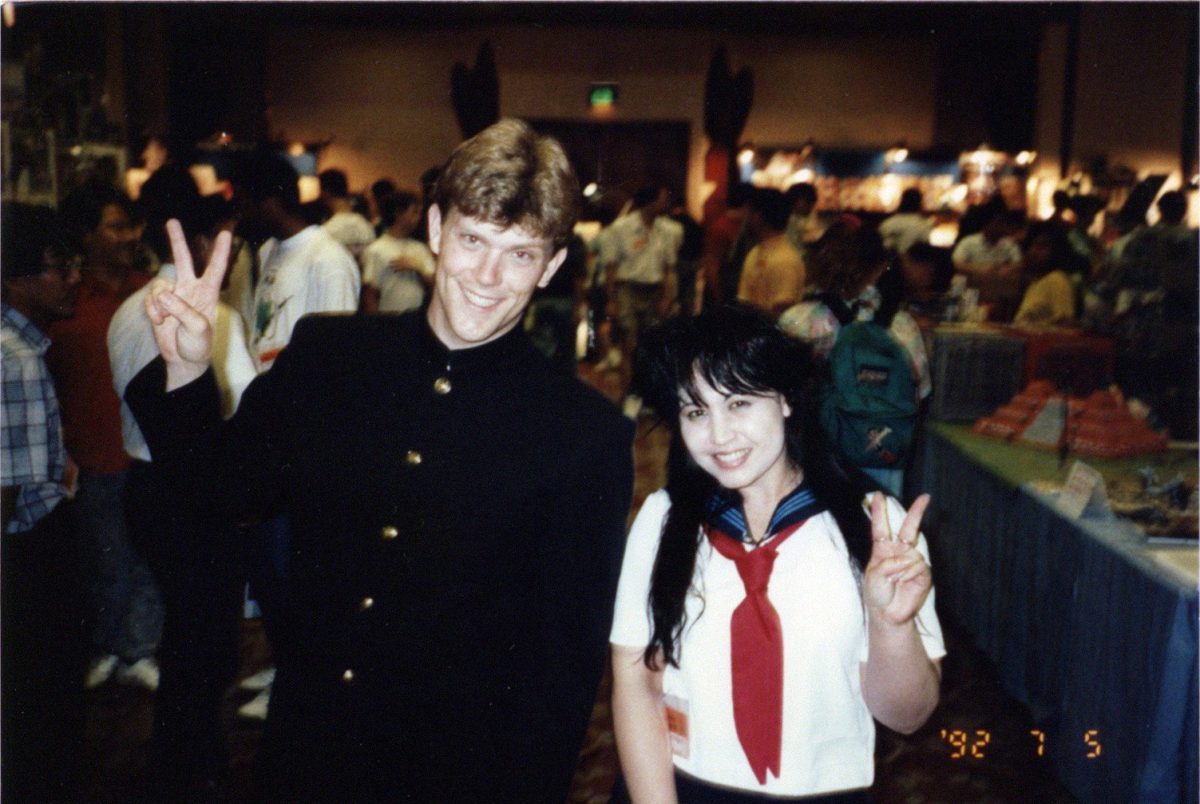
While we think of Anime Expo as the first dedicated anime convention because of the cultural juggernaut it’s become today, credit for being the first dedicated anime-only convention goes to Project A-Kon — now known as just A-Kon, as the last Project A-Ko fan who could get the joke passed away of old age — which started in Dallas in 1990. We used to attend this great show every year, but the 24-hour drive straight from San Diego eventually got to be too much.
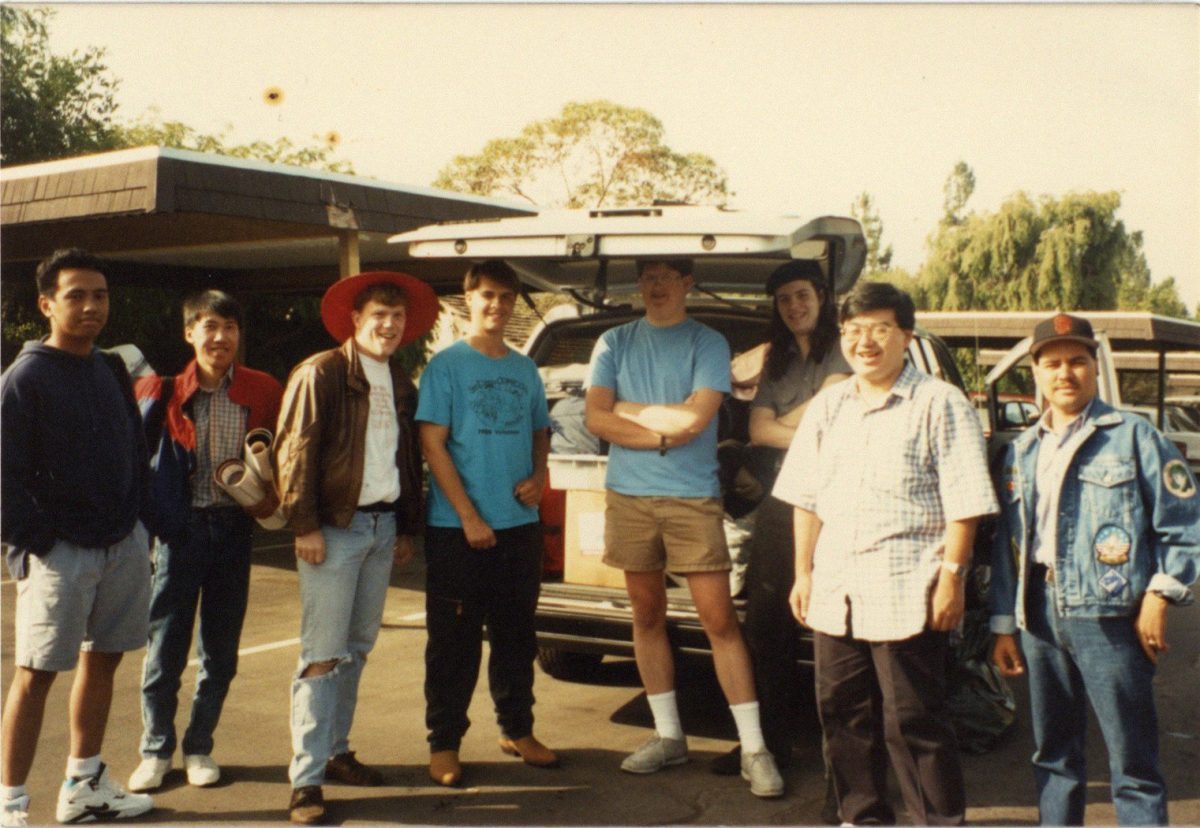
Anime Con ’91
Anime Expo “zero” was held August 30-September 2 at the Red Lion inn in San Jose, so naturally, my crew from our local anime club and I rented a large minivan so we could drive up and attend. That’s me, wearing the red straw hat from Orange Road.
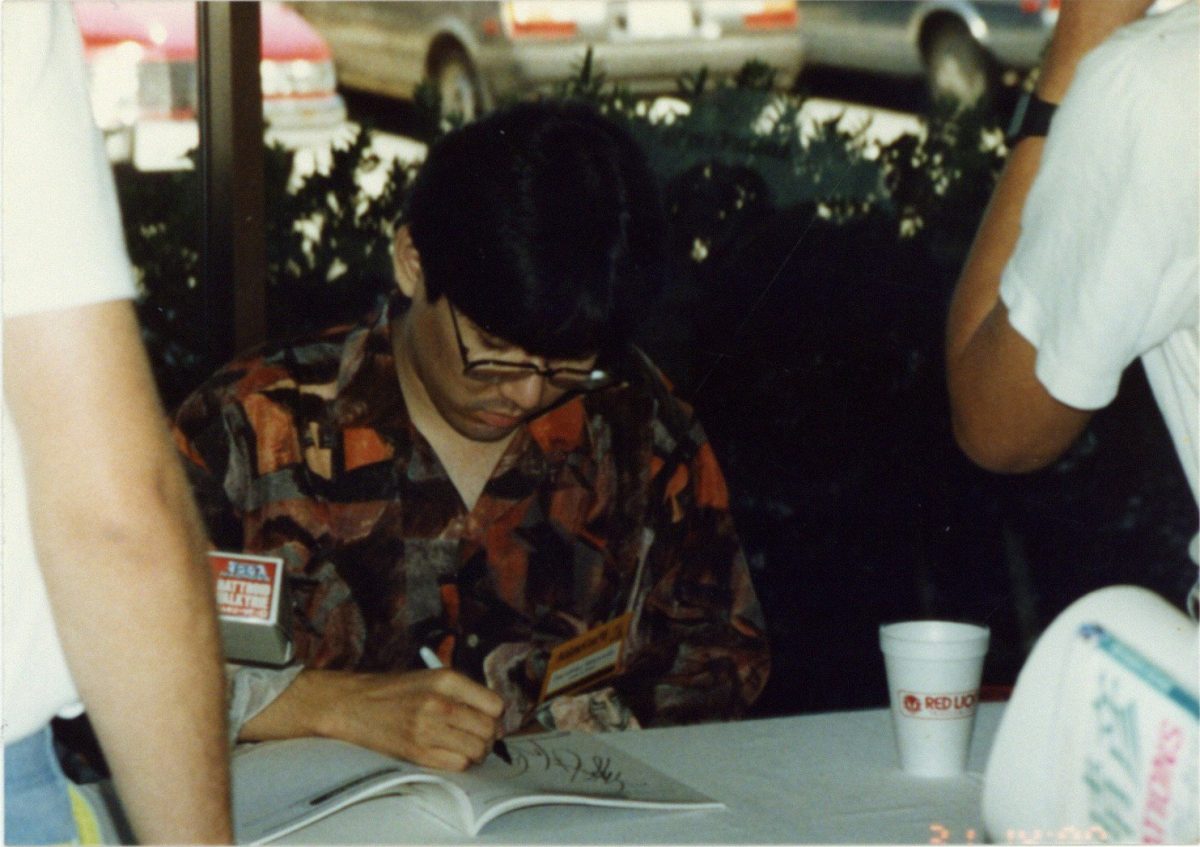
Right off the bat, we knew this new convention was a game-changer because it had a huge number of famous guests from Japan. Here’s Haruhiko Mikimoto, character designer for Macross…
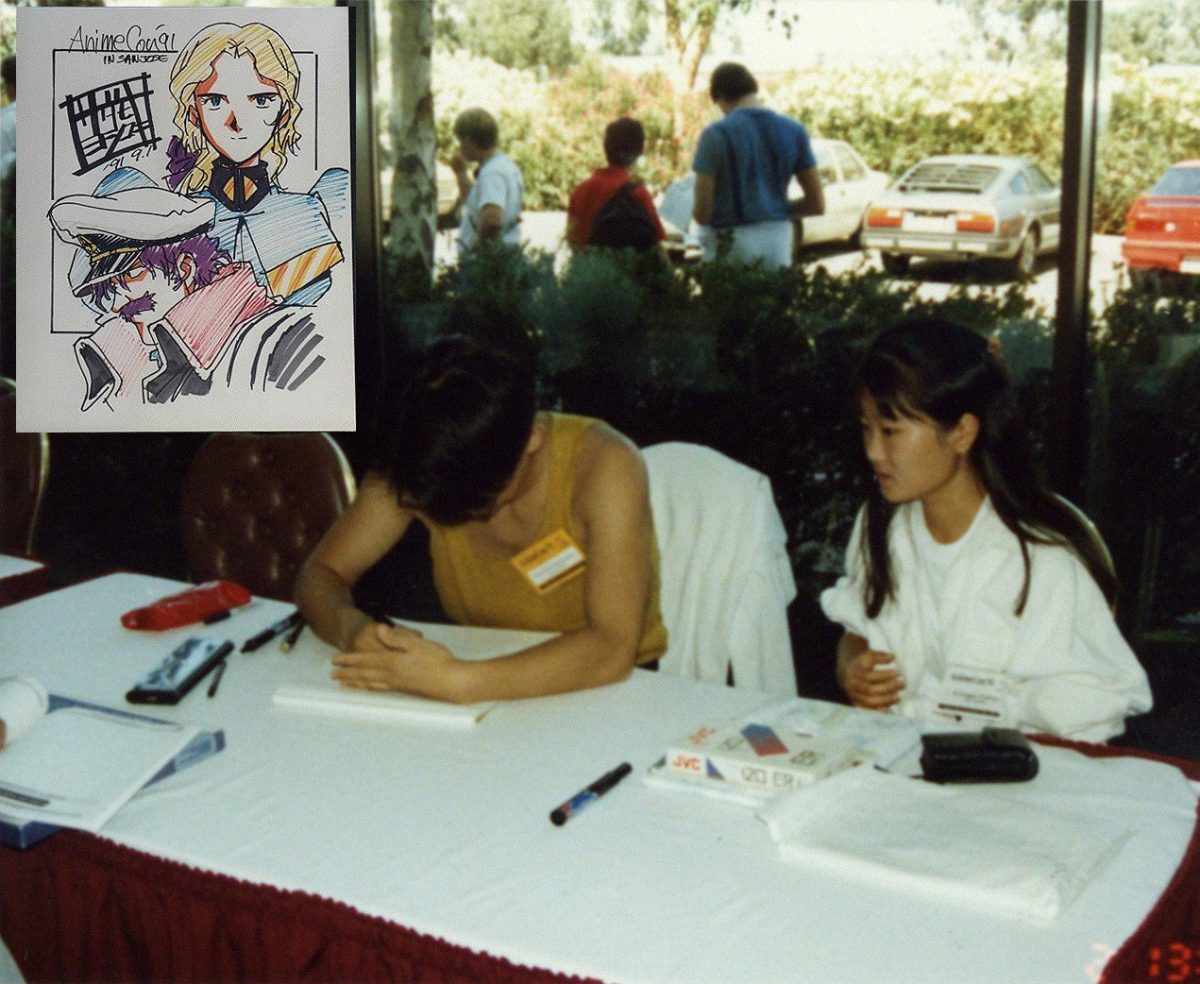
…and Yoshiyuki Sadamoto, famous for his character designs of Nadia of the Mysterious Sea and Wings of Honneamise, though Evangelion would soon make him one of Japan’s most famous illustrators. While waiting in line, I practiced by nascent Japanese by hitting on the cute Japanese girl who was hanging around his table, only to discover later that she was Sadamoto-sensei’s wife. Oops!
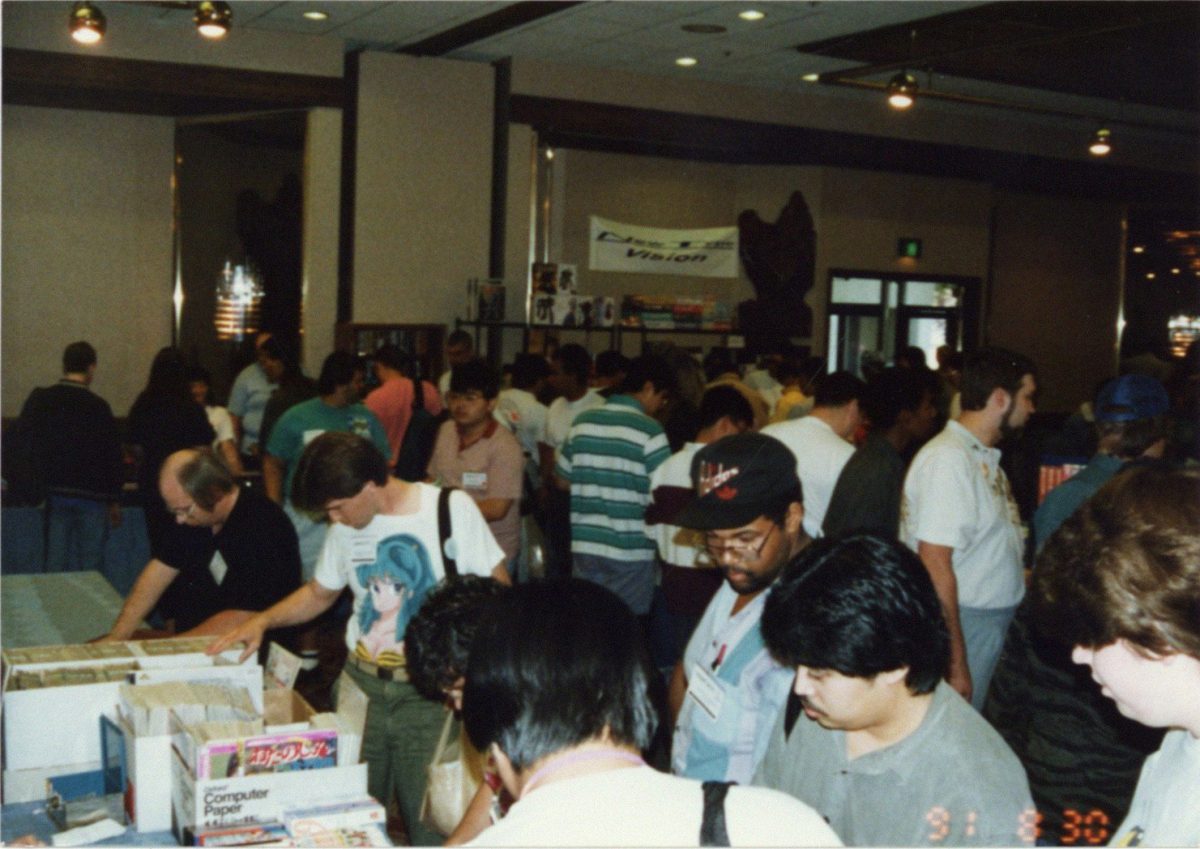
The dealer’s room was pretty pathetic, looking back, but we all found something fun to buy. The anime retail space was dominated by early anime importers like Books Nippan and Nikkaku Animart, and we all worshipped these companies for bringing us such wonderful goods to buy.
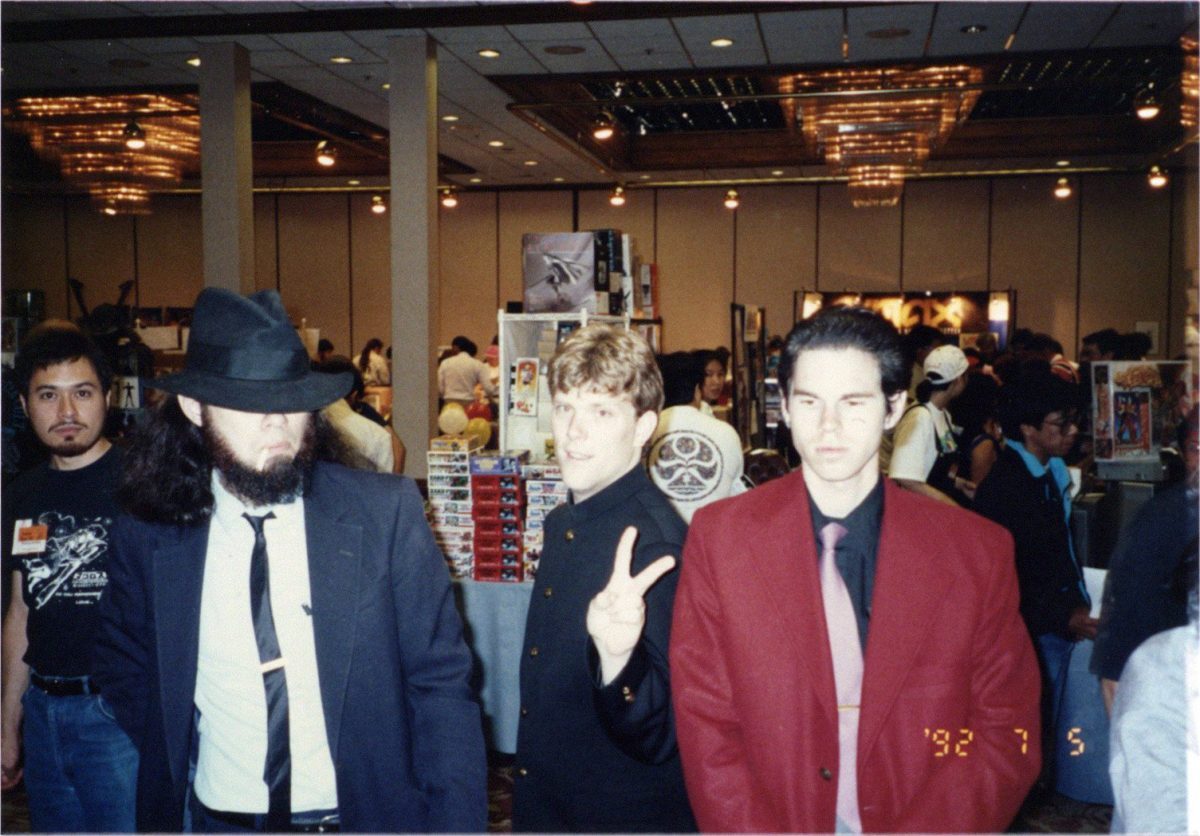
Anime Expo ’92: The First Anime Expo
The first true Anime Expo event was held July 3–6, 1992, again at the Red Lion Inn in San Jose. It was bigger, with more fans, more guests, and a lot more dealers selling manga, garage kits, and other products from Japan.
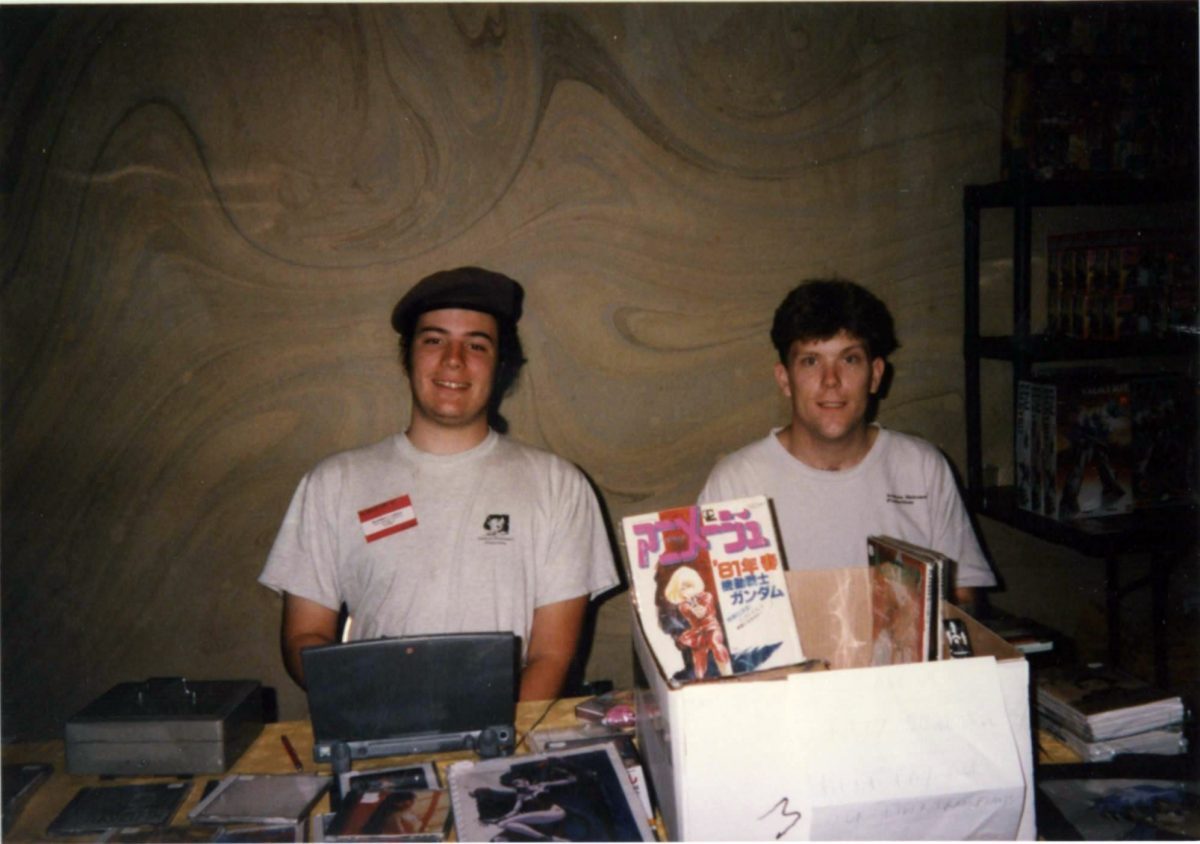
Anime Expo also featured me, appearing as a proper anime dealer for the first time, selling various magazines and other cool times I’d scoped out after living in Japan for nine months. This was my sort of testing the waters for what would become J-List, and I clearly enjoyed being on this side of the booth from the beginning.
(I began selling manga and used JPOP CDs on Usenet around 1994, posting the list of items I had for sale available in an Excel document called The Japan List. I started JAST USA in 1995 and later founded J-List as a side business “to tide us over for a year or so” until visual novels took off, but of course J-List would end up being the main business.)
If you’re wondering what the shirts we’re wearing are, it was Seishun Shitemasu, a fan-dubbing group we were doing back before the Internet offered nonstop entertainment. Ah, memories…
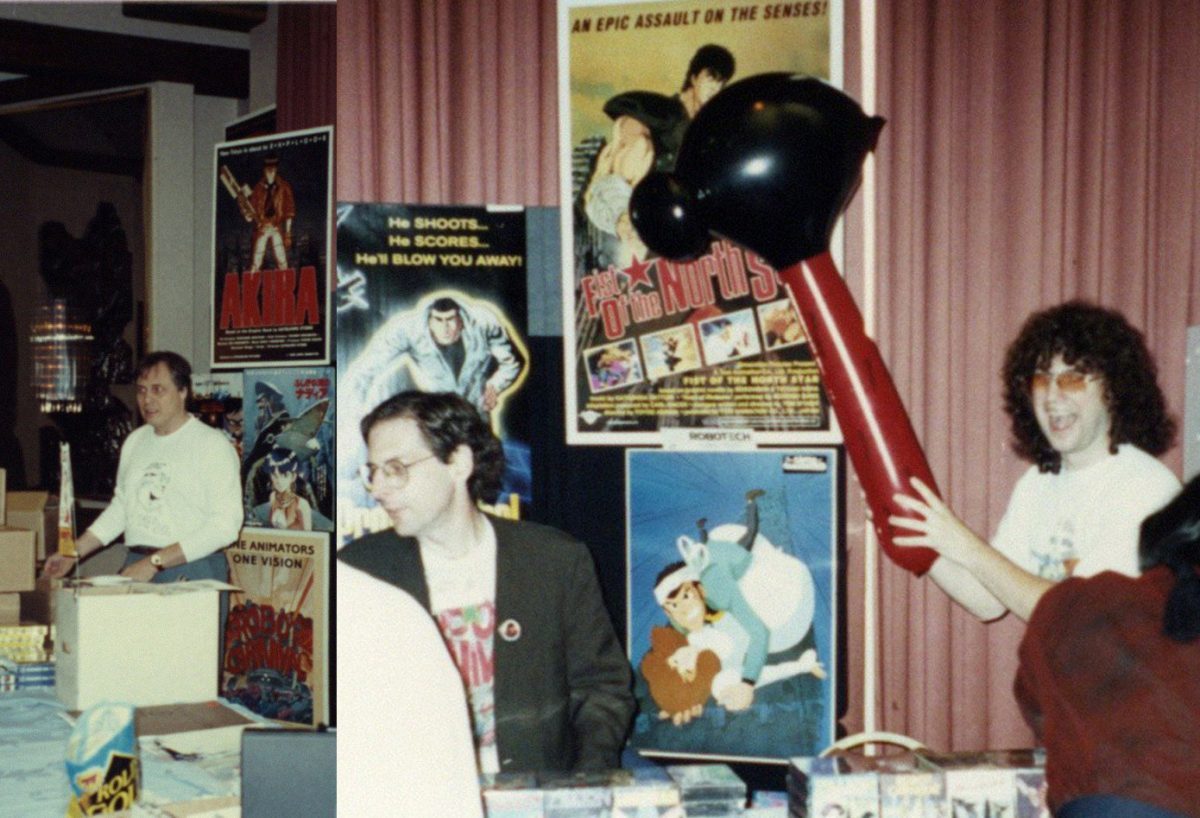
We were right next to Carl Macek and Jerry Beck, founders of Streamline Studios, who were trying to get into dubbing and distributing anime on VHS tapes. Though I’m thankful to Carl for helping shape early anime fandom by creating Robotech, as well as for inspiring me to go into anime as a business, around this time fans were realizing that splicing up and editing three unrelated series wasn’t the best way to show respect to the original Japanese creators.
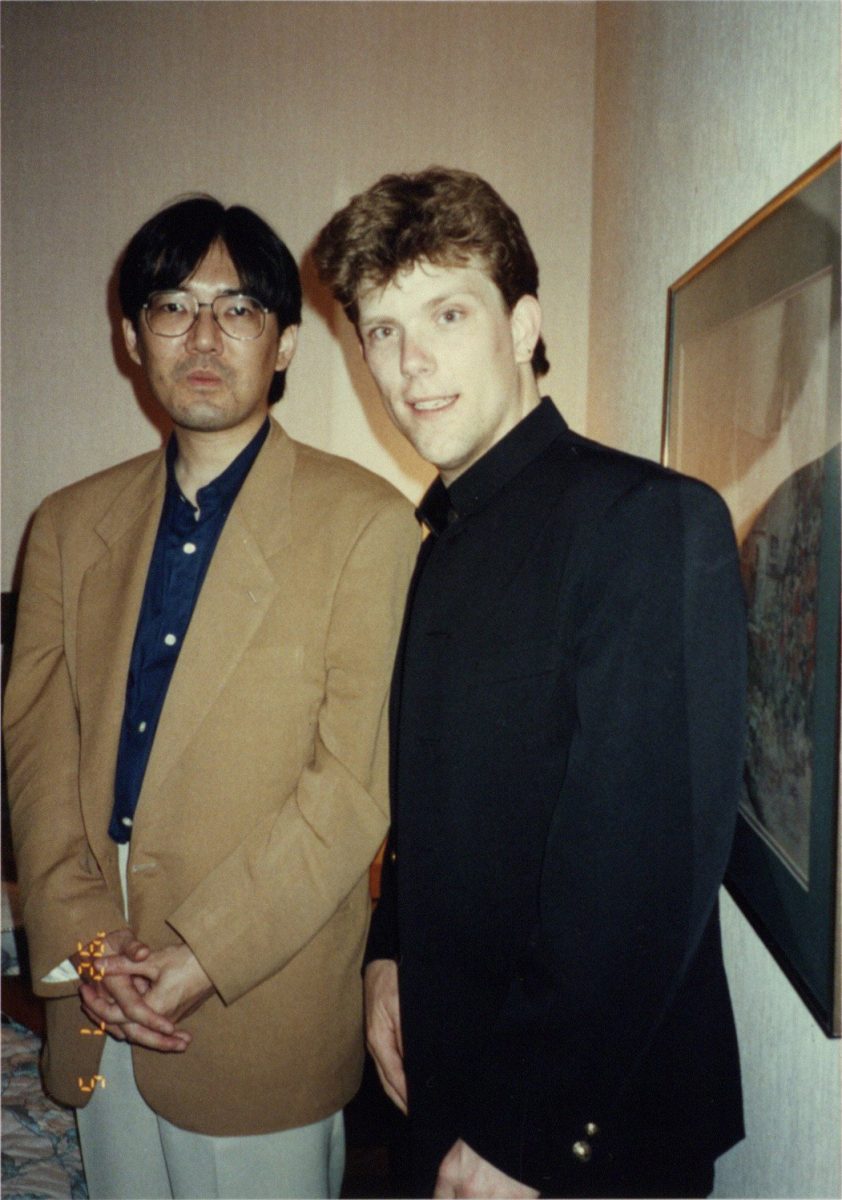
As at the previous show, there were loads of famous guests, because the convention had the support of anime studios who were wondering if a proper market for anime might not be possible one day. With just 1750 attendees, things were wonderfully informal. Here Haruhiko Mikimoto is hanging out in my hotel room because he couldn’t find anyone else who spoke Japanese.
The Various Eras of Anime Expo
Since I like to split things into groups, I’ll divide the various eras of Anime Expo, as I perceived them over the years…
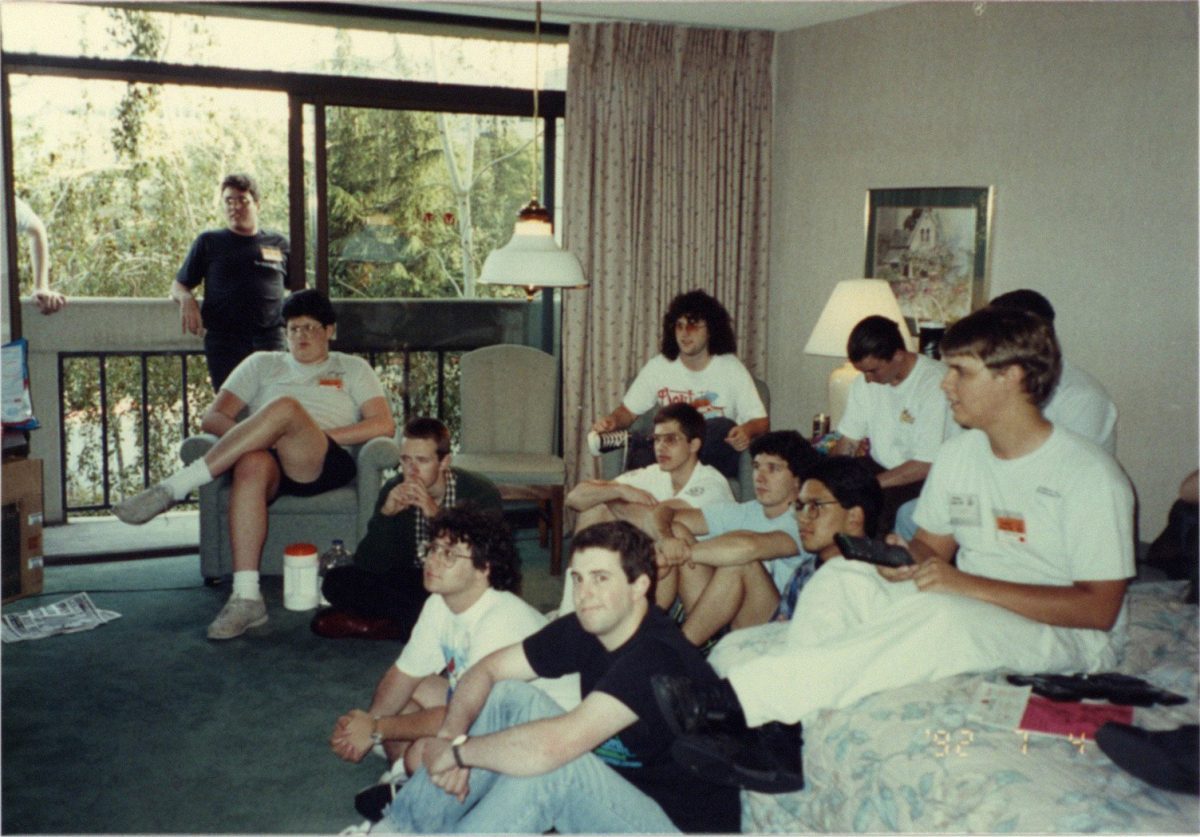
The Hotel Years 1992-2000
These were the days when anime expo was small enough to occupy a single hotel or a hotel with some large “convention center” facilities tacked on. These were fun days because the whole hotel was basically taken over by anime fans, and we could roam the halls and find other fans to drink shots with, or whatever was going on. Attendance slowly grew towards 7,000 over this time.
Sometimes Anime Expo wasn’t big enough to hold the entire event, and we found ourselves sharing the hotel with unrelated groups. One year the Anaheim Hilton and Towers hosted three conventions: nerdy cosplaying anime fans from AX, a strict Bible study group from the Midwest and…a convention of gay square-dancers who were decked out in leather chaps that were quite fabulous. That combination made for some rather interesting elevator rides.
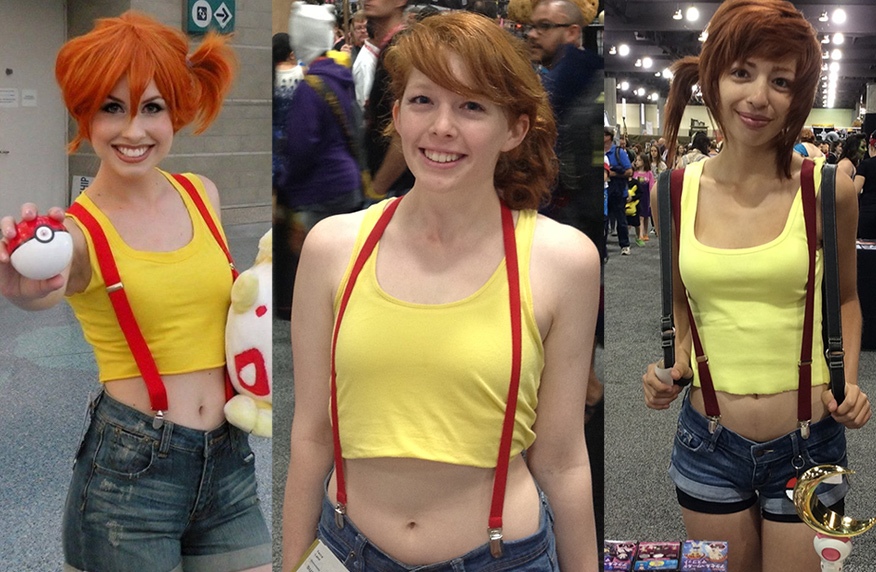
Although there was cosplay at the event from the very beginning, none of us knew this word at the time. I think we would have called it “costuming” or maybe “masquerading.” The term cosplay was coined in 1983 when an anime magazine had to make space for “hero costume play” on a layout. The word probably entered English awareness through the popularity of Pia Carott around 1997, which was when “cosplay cafes” were starting to be a thing in Akihabara.
The Small Convention Center Years, 2001-2007
Anime Expo bounced between the Anaheim and Long Beach convention centers every couple of years, with official con hotels providing lodging for events. Attendance grew every year, reaching an incredible number of 41,000 attendees. I remember when Pokemon first exploded in popularity, an executive from Bandai came over to thank me for being the only dealer in the room who was selling properly licensed Pikachu plush toys from Japan, rather than the Taiwanese knock-offs everyone else had.
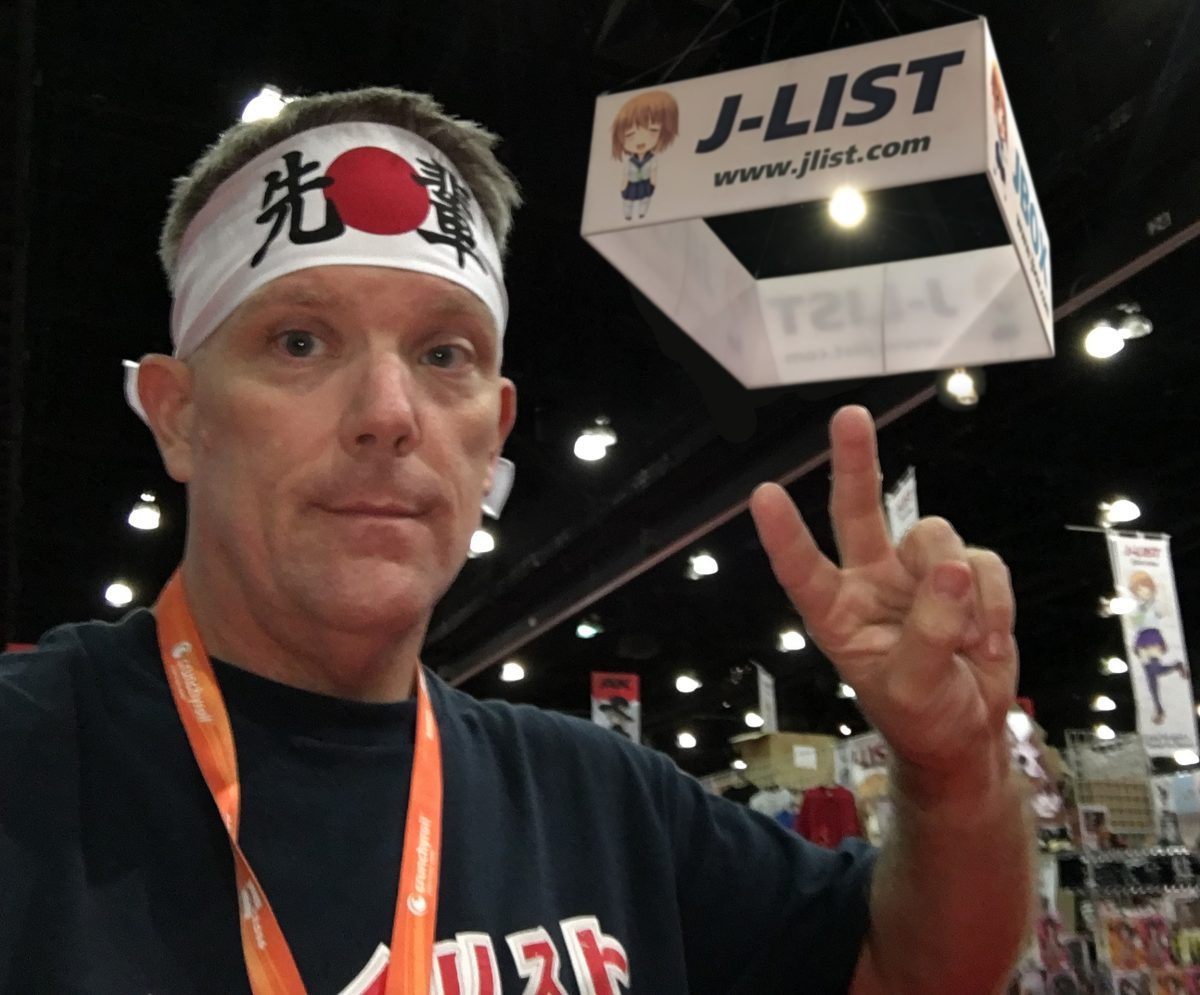
The Los Angeles Convention Center Years, 2008-
The only way the convention could continue to handle the exploding popularity of anime was to basically take over the biggest space it could, the Los Angeles Convention Center. This was a great development and ensured that fans could attend all the panels they wanted, and buy all the cool figures, T-shirts, games and hentai. Here are some of the highlights through the years…
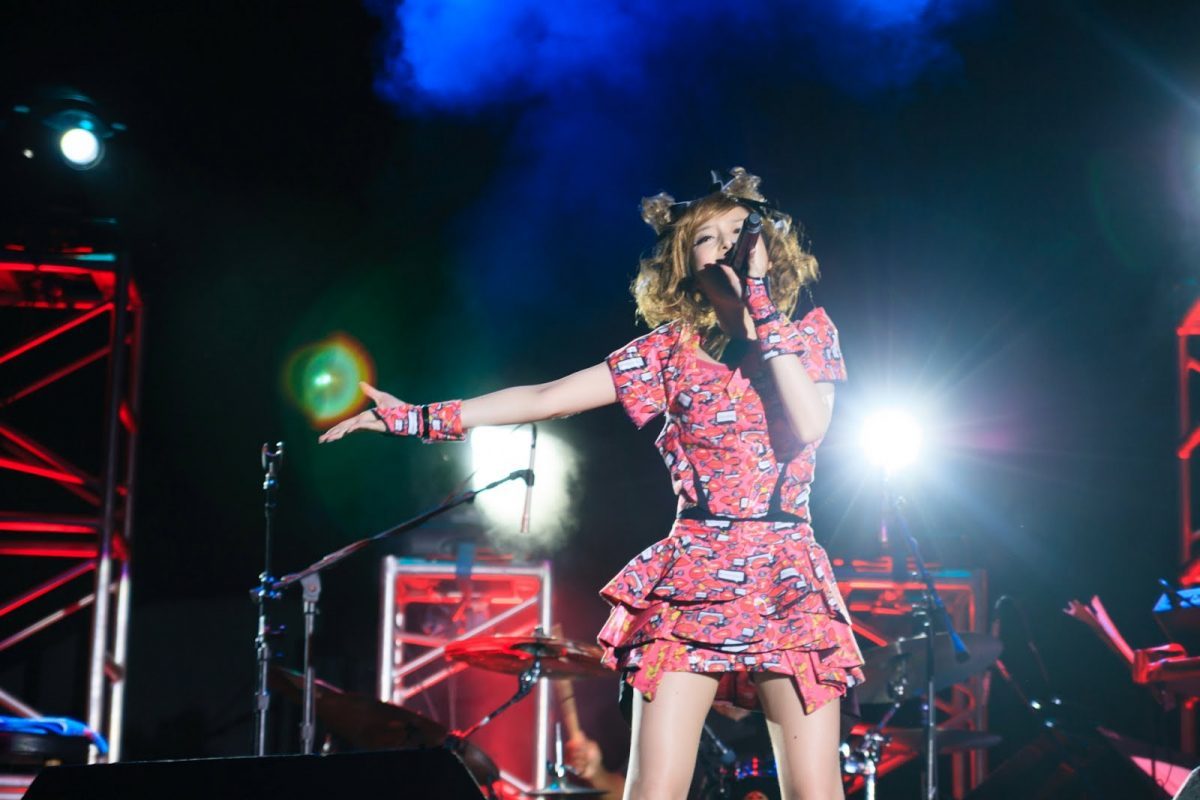
Anime Expo had always been the one place where you could be close to the people who make anime magical, from directors to illustrators to seiyu. One of the highlights for me as a geek was having a live performance of all the songs from The Melancholy of Haruhi Suzumiya in 2007, including Aya Hirano (Haruhi), Minori Chihara (Yuki) and Yuki Goto (Mikuru) on stage. This photo is from Aya’s performance at Otakon a few years later.
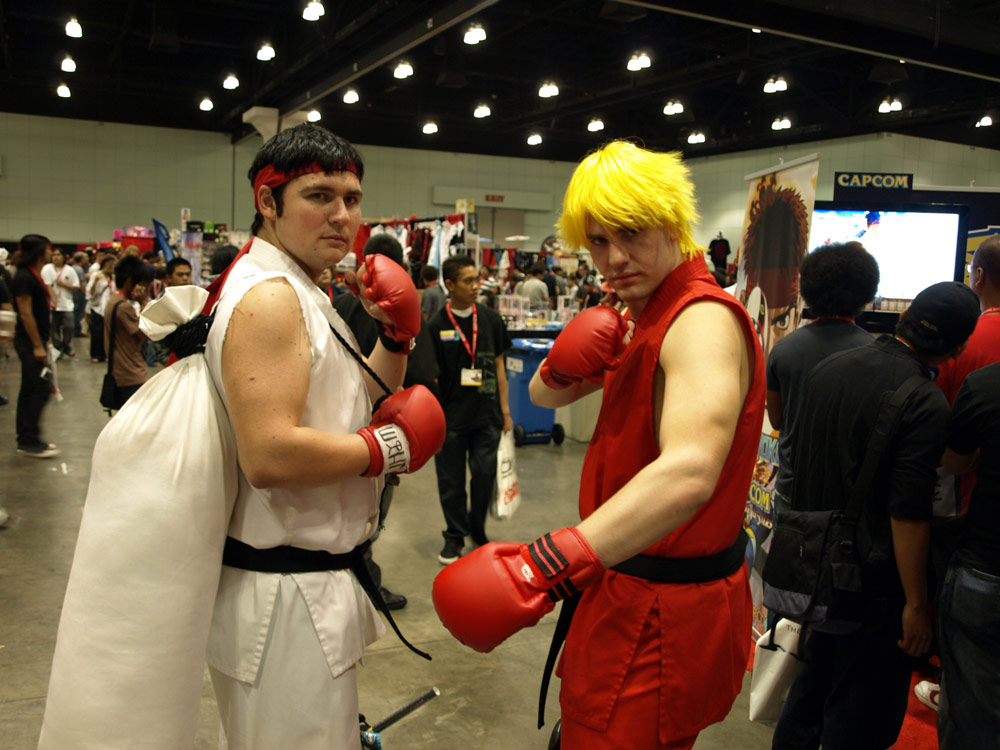
I remember the fearful years of the 2008-2009 housing crash, during which enough dealers pulled out of the event that they widened the aisles to a ridiculous degree. One of the most expensive things for a convention is the carpeting that must be laid down for fans to walk on. We knew times were tight when AX moved to having no carpeting, with fans walking on bare concrete.
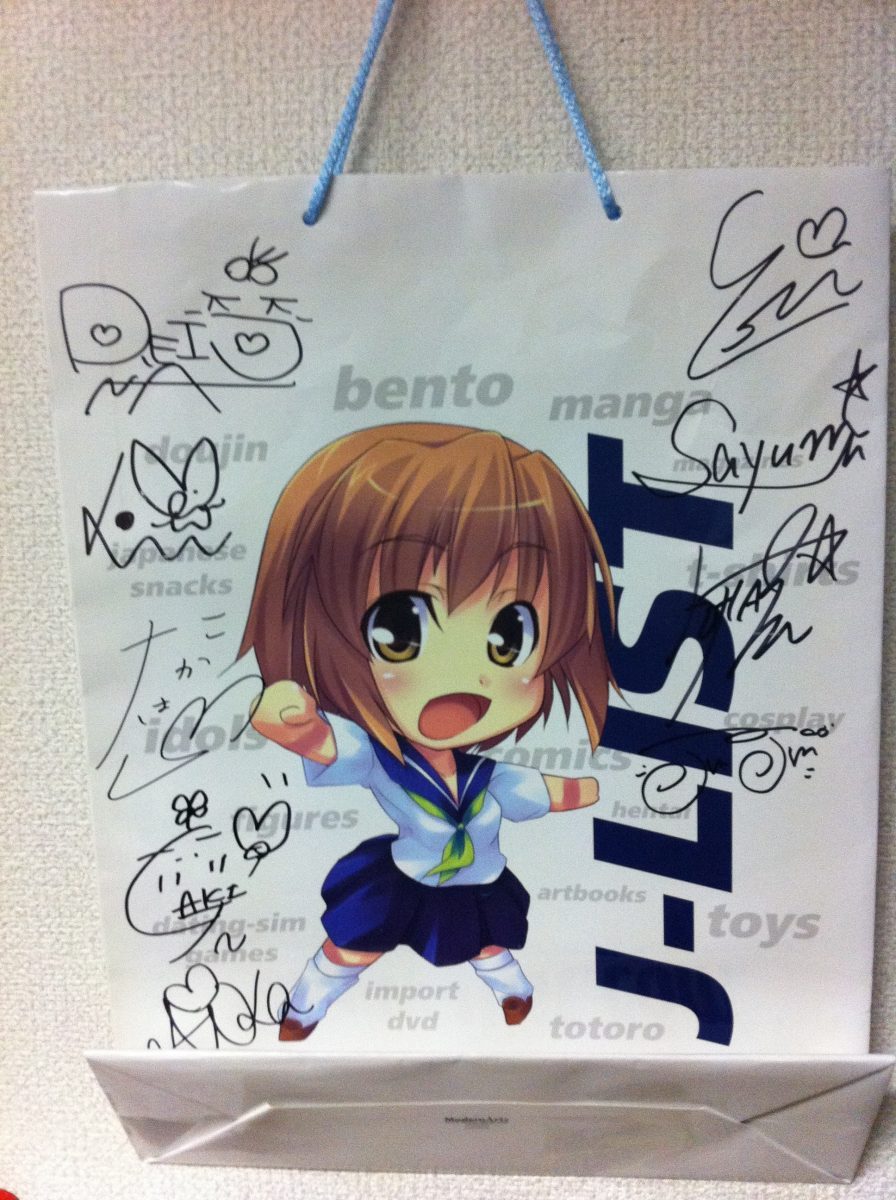
One highlight of the 2009 show was that Morning Musume was there, doing a meet-and-greet with fans. I got their autograph on a J-List bag. This was during the H1N1 “pandemic” (lol) and one of the managers of the idol group was shocked when I shook hands with one of the idols, something that was strictly forbidden.
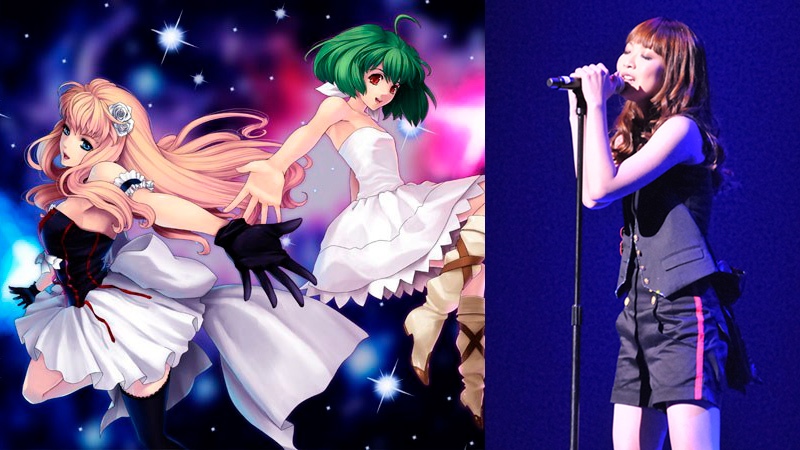
Another highlight came when the Megumi Nakajima and May’n from Macross Frontier put on a live performance for fans in 2010, with a surprise appearance by Yoko Kanno.
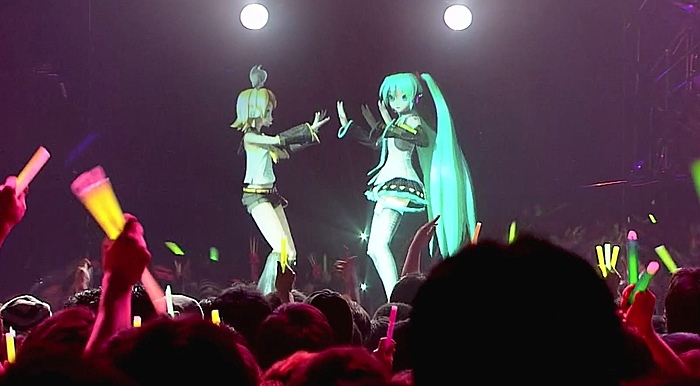
In 2011 we got another treat: a live performance by Hatsune Miku!
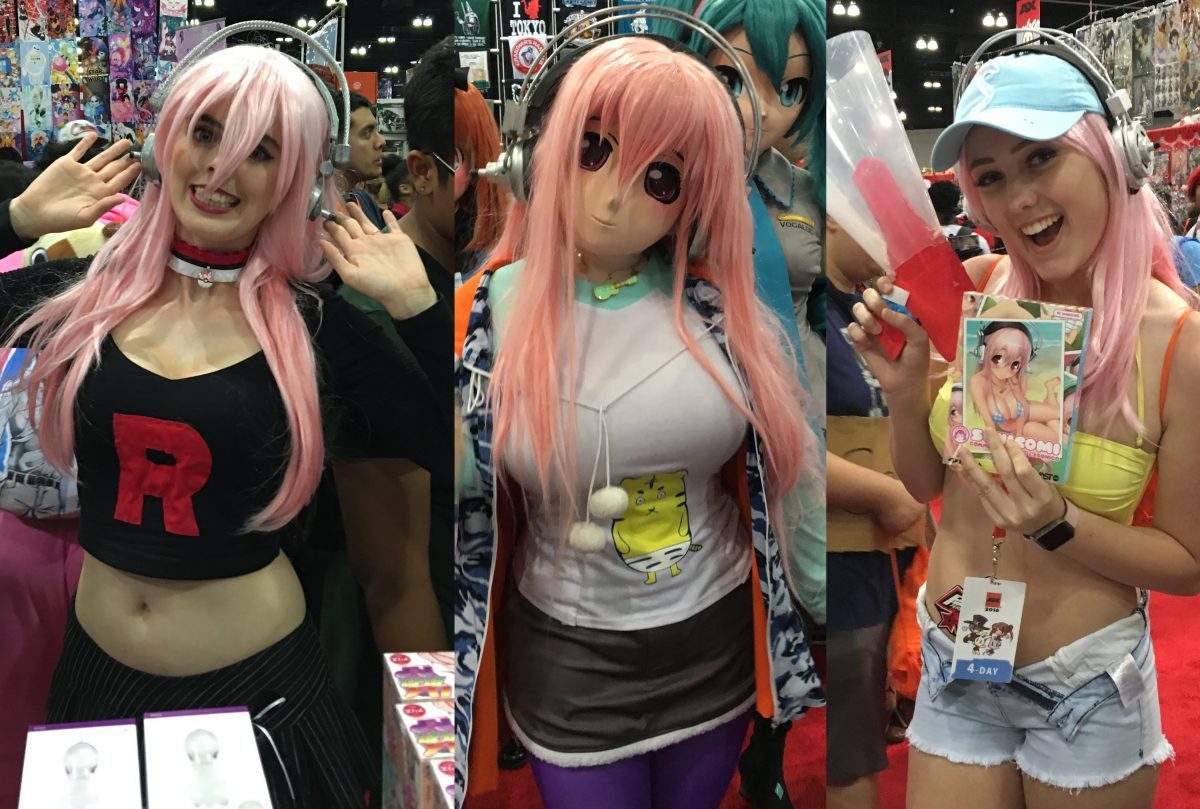
In 2016 we released the Sonicomi: Communication with Sonico game in English, and we had a contest with prizes for anyone who attended the convention cosplaying as Sonico. We figured we’d have 5-6 cosplayers, but ended up with more than 50. Sonico was such a successful release, we ended up selling more copies of the English version than Nitroplus did in Japan.
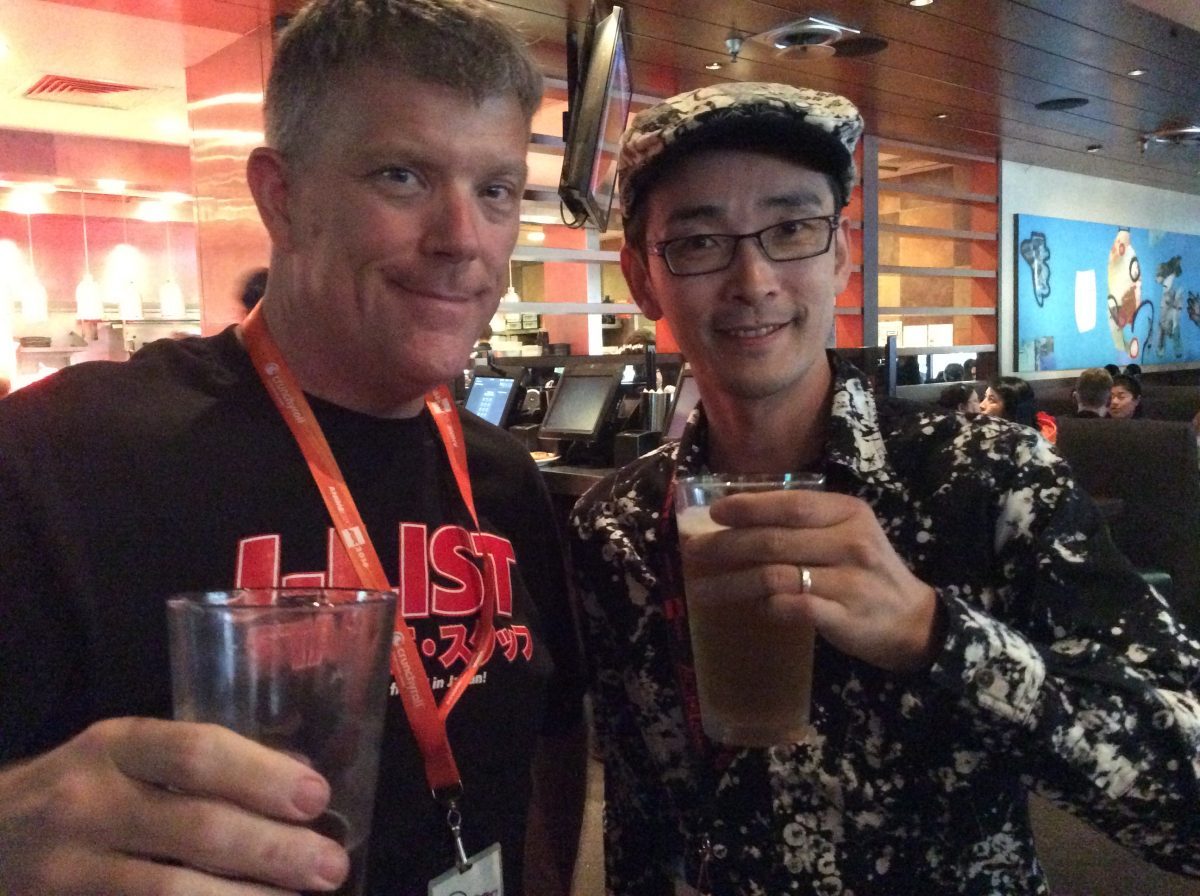
One of the benefits of J-List being an official Touhou shop is getting to throw back a beer or three with Touhou creator Zun. Immediately after taking this picture he noticed a Touhou cosplayer who had wandered into the Yard House, never suspecting she’d get to meet Zun himself.
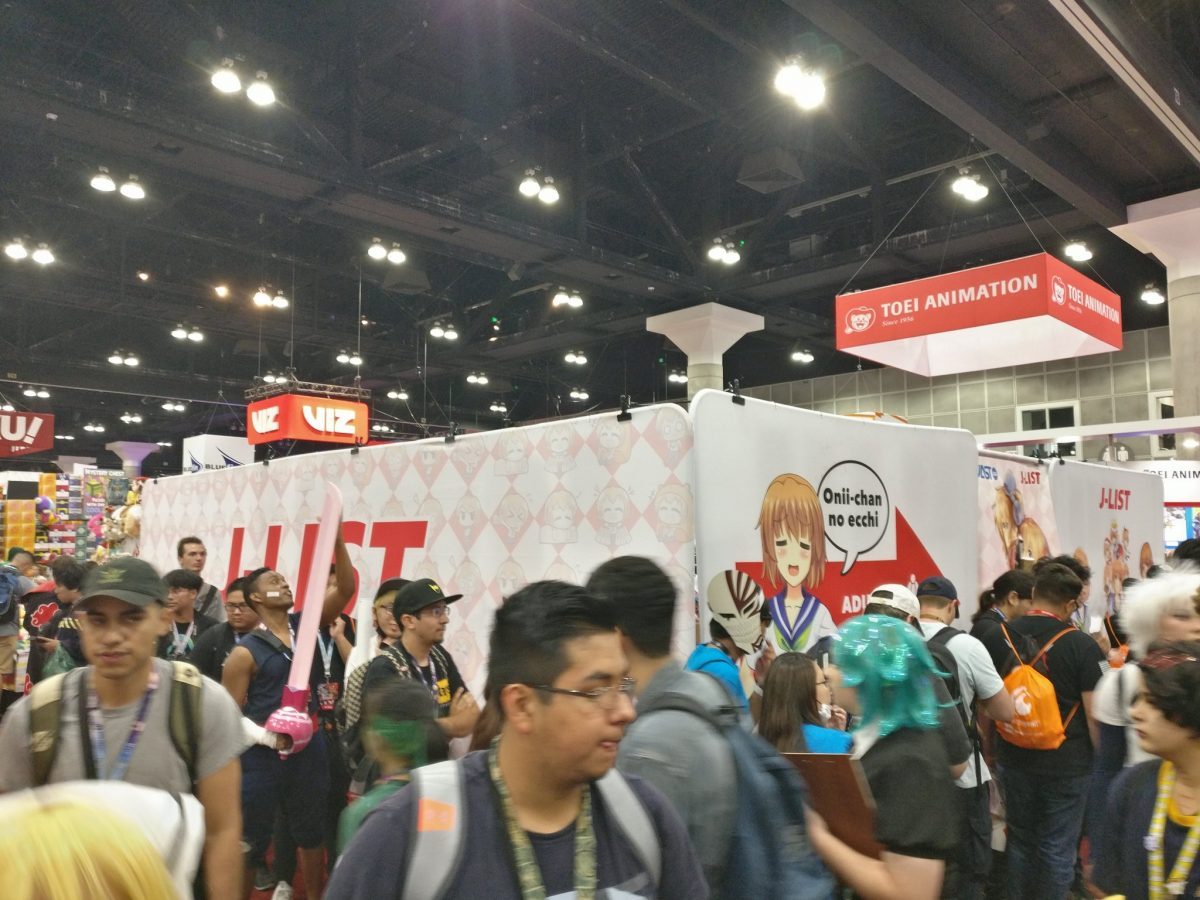
As the show grew and gained in popularity, surpassing 100,000 attendees in 2016, J-List and JAST USA also grew, bringing more exciting products and being the “default” place to go for hentai products, along with Fakku. Our booth was getting so popular, we were causing real problems for the convention — at one point the line to enter our booth wrapped around twice.
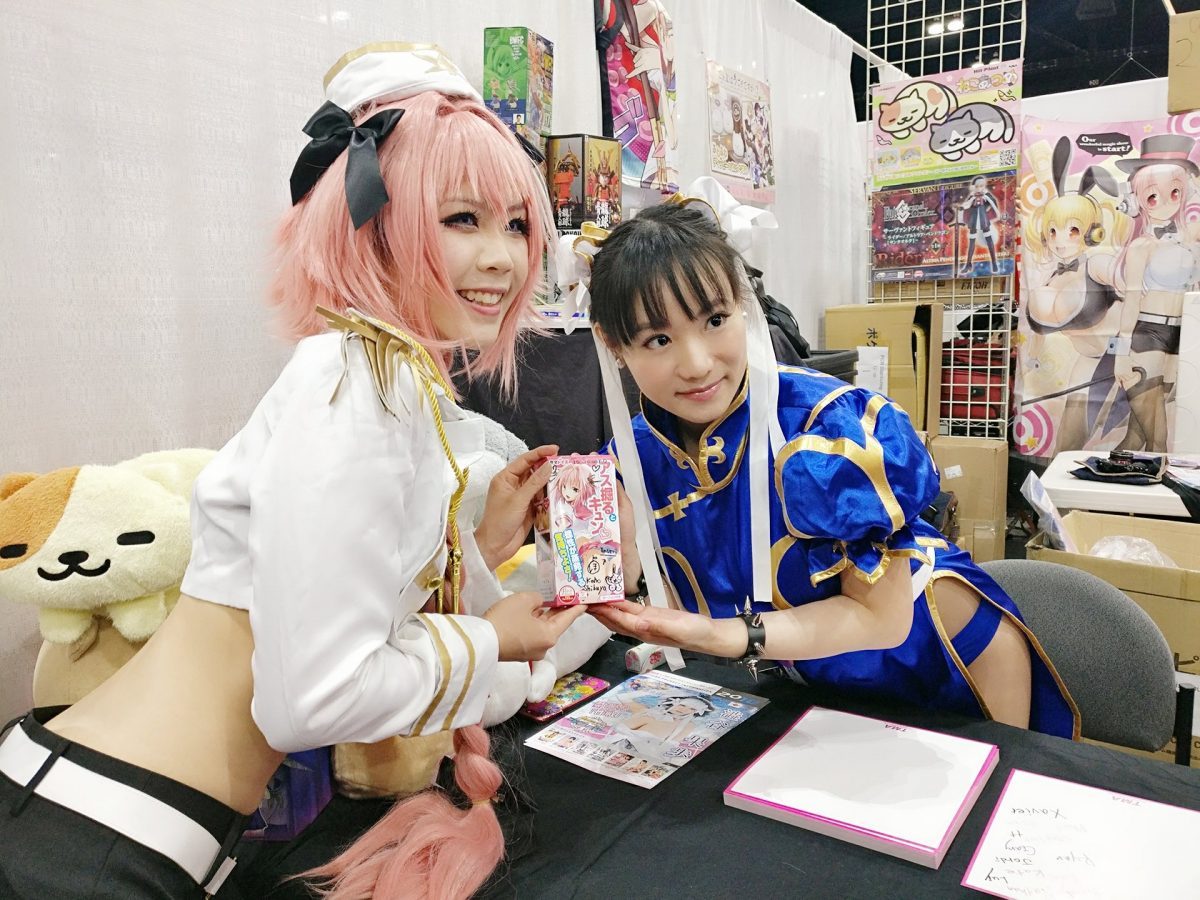
Everyone loves famous guests, and J-List’s customers went wild when we invited Kaho Shibuya, one of Japan’s most famous JAV actresses and cosplayers, in 2018 and 2019.
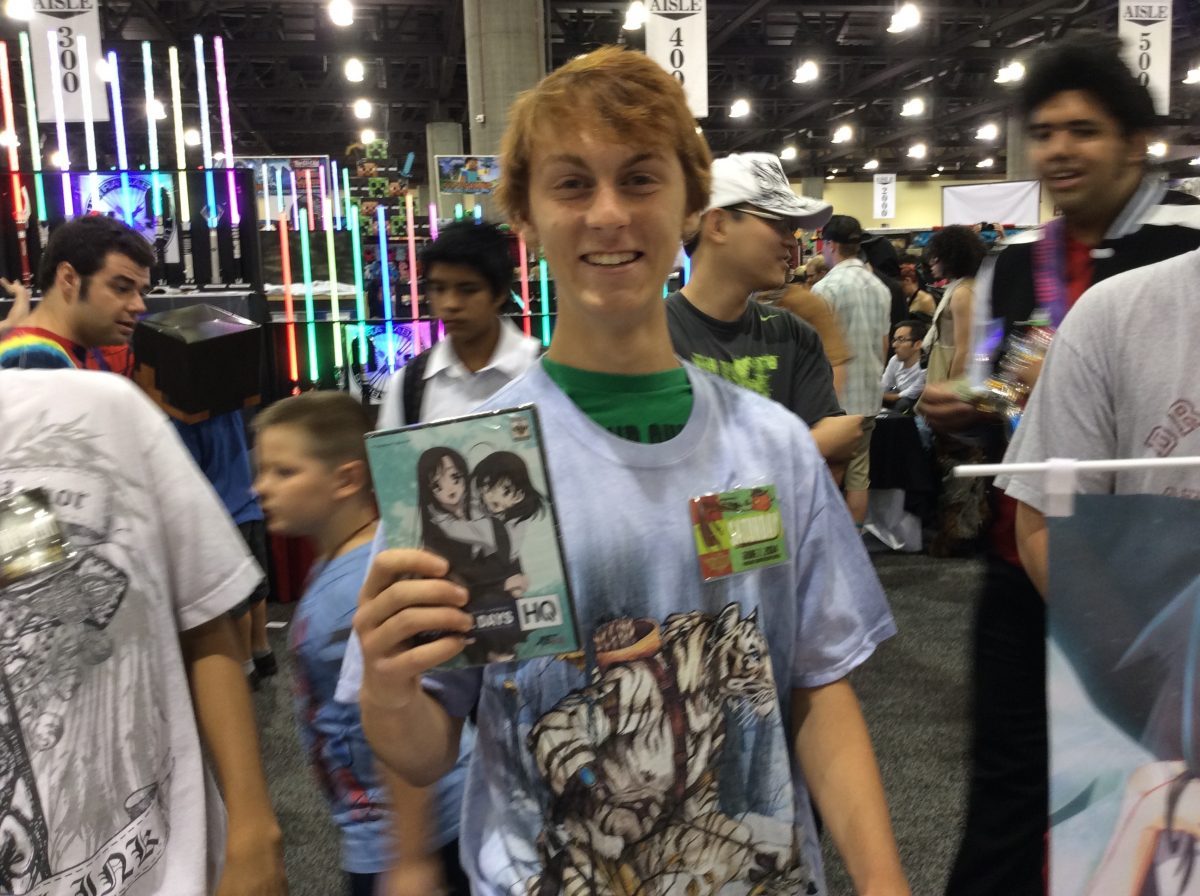
J-List has always been closely tied to the popularity of visual novels, and nothing makes me happier than seeing the smile on the face of a fan as he or she picks up a great game they’ve been waiting to play.
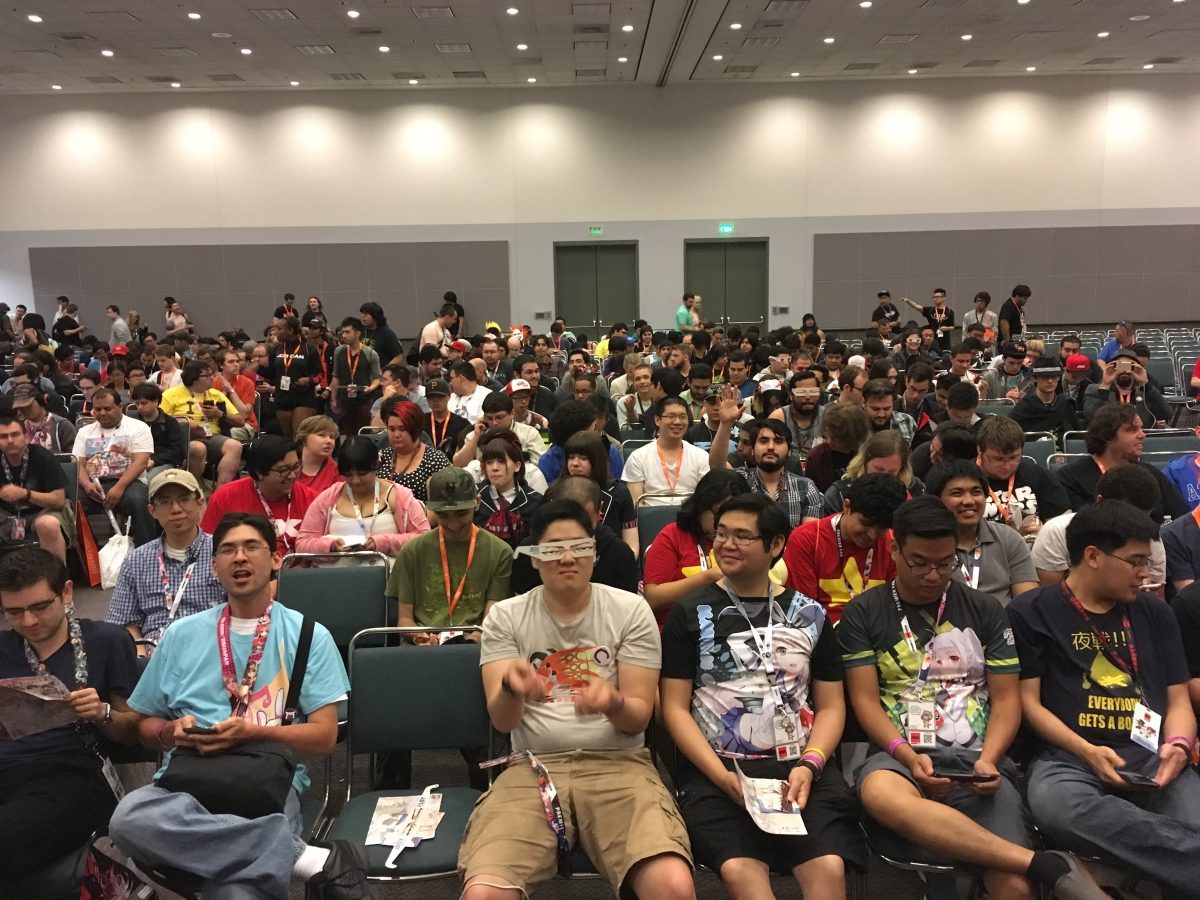
We’ve always done industry panels, calling fans to talk about what cool new games JAST USA would be releasing. We all had lots of fun together, geeking out about visual novels together.
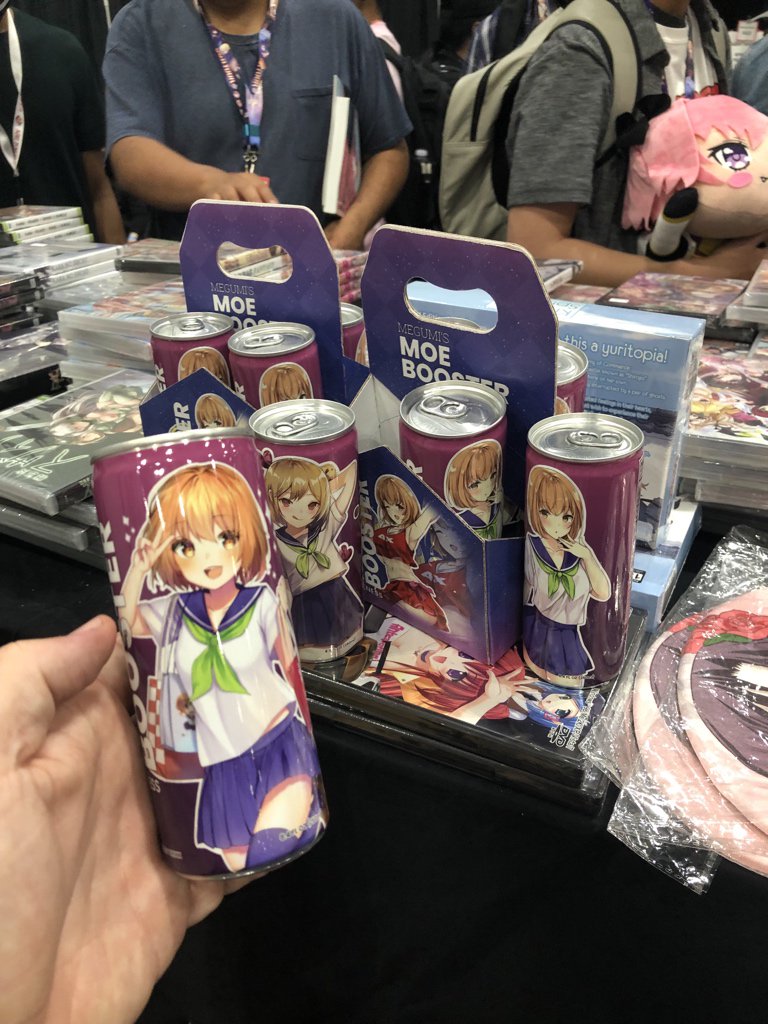
As the years passed, we thought of new products to bring to our customers. One was Moe Booster, an energy drink that gives you +5 cuteness when you drink it. These were con exclusives, and we’ll make sure to bring them back in 2021!
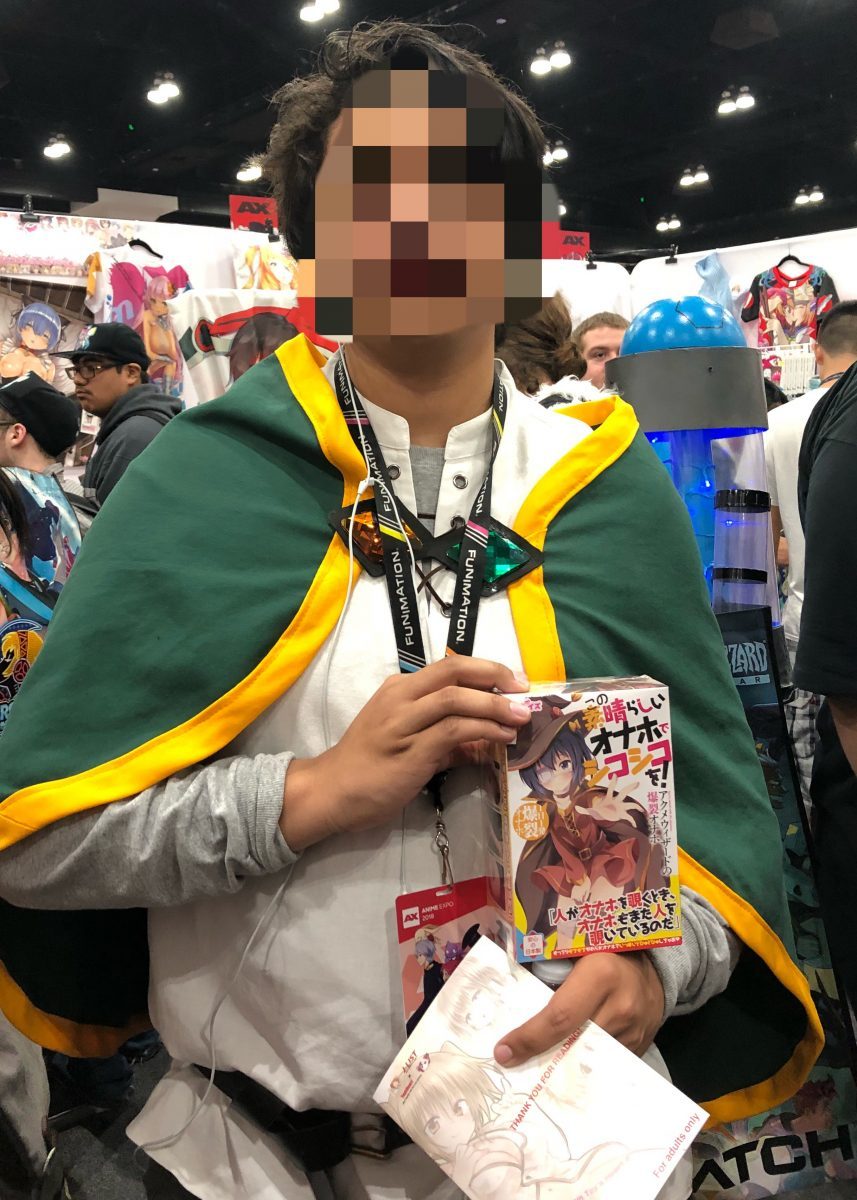
Naturally, we’ve sold many naughty products at the show over the years. Nothing makes us happier than matching the right customer with the right ecchi product!
Final Thoughts on Anime Expo
Despite the long lines, the negative politics of fandom, and other challenges, I can say that Anime Expo is just about my favorite place in the world. Unlike a more general con like the San Diego Comic-Con, where comics, sci-fi and The Walking Dead all compete with anime for mind-share, Anime Expo is a magical place where everyone is exactly like us, an otaku who loves anime, manga and games from Japan. At 115,000 attendees in 2019, it’s only a tiny bit below SDCC’s 135,000 attendees, but considering the fact that everyone is there for anime, there’s really no better place on Earth.
We’ve got a post reminiscing on San Diego Comic-Con over the years, too. See it here.
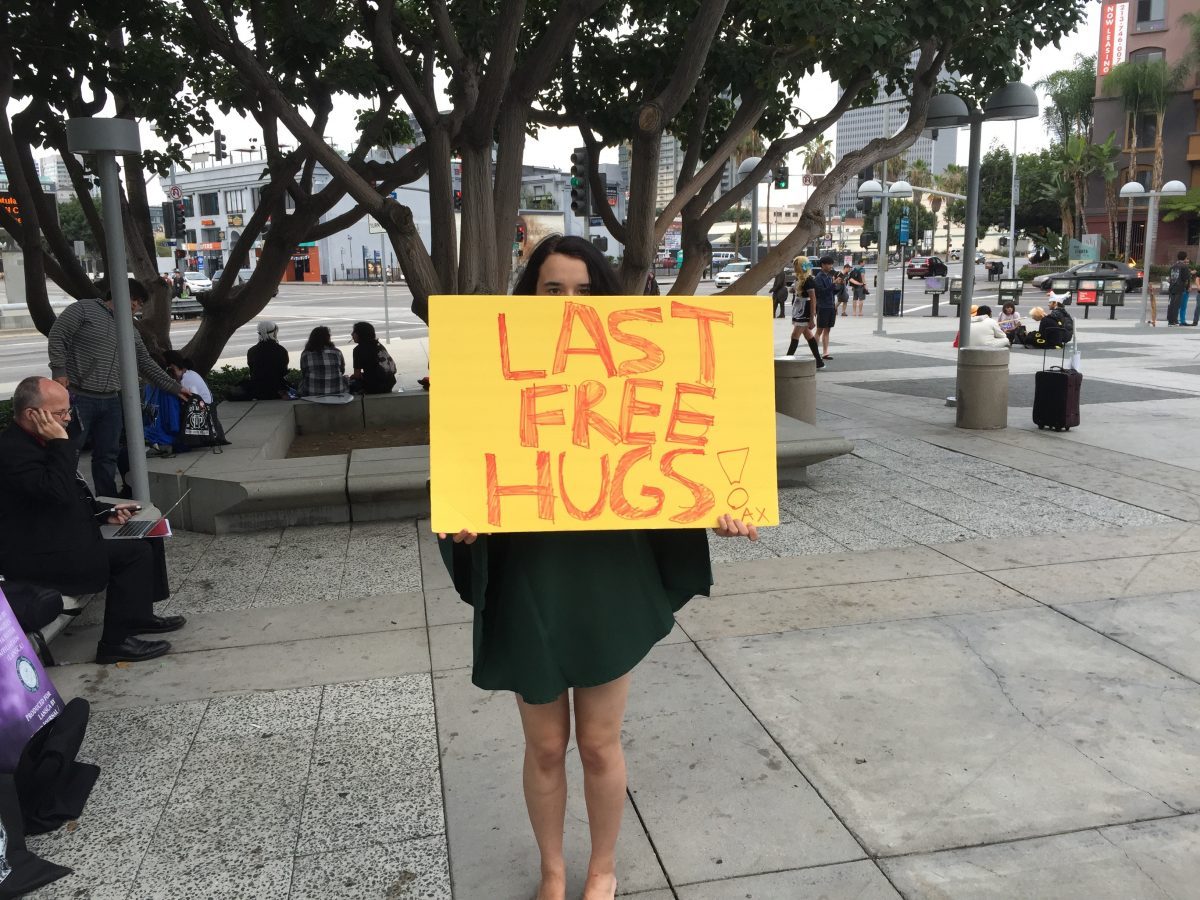
Thanks for reading this long post about my long journey with Anime Expo through the years. Though Anime Expo 2020 was canceled due to COVID-19, I am positive that the event will bounce back, stronger than ever, supported by the love fans have for anime as well as the greatest anime convention in the world.

Peter Payne
President/Owner of J-List
Got any fond memories (or embarrassing photos) from Anime Expo? Post them below, or tag us on Twitter!
It never rains, it pours…onaholes, that is. We’ve got a huge number of high-quality male stress toys for you to browse on the site, with everything from official hentai ero toys to high-quality toys that simulate a sweet encounter with a special girl. Browse our new adult toys here!



